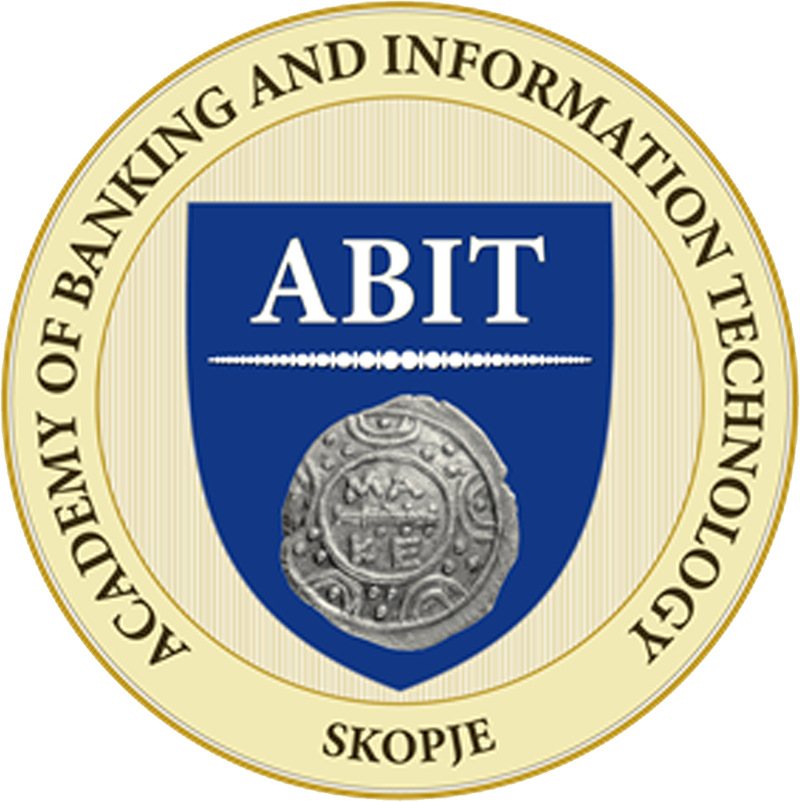Certified Risk Manager and Credit Analyst
Through a structured and systematic approach to the analysis of the company and its environment to enable the adoption of proper creditworthiness assessment, which is of particular importance for maintaining the quality level of banks’ loan portfolio and ultimately maintaining the financial stability of the banking system as a whole.
Experience
BEGINNER WITH BASIC BANKING KNOWLEDGE
Duration
3 MONTHS
Dedication
6 HOURS A WEEK
Start
MARCH 2024
Format
HYBRID BY CHOICE
Price
1200€
Certified Risk Management and Credit Analyst
1. The banking sector, risks, characteristics
– Evolution of Risk Management Regulation and Review of Basel and Basel Standards
2. Risk management framework and types of risks
3. Risk management and risk parameters
4. Credit policy and credit risk – strategic management
5. Role of credit analysis, the credit analyst and the credit function
6. Qualitative factors as part of the credit analysis
7. Other non-financial risks (operational, reputational, strategic, profitability and capital)
8. Lending strategies (Lending by industry, Project financing, structure, retail banking)
9. Analysis of Balance Sheet, Income Statement, Ratio analysis and cash flows
10. Advanced financial statement analysis and analysis techniques
11. Analysis of the economic situation and regulations
12. Collateral management as an instrument to reduce credit risk
– Analysis of creditworthiness and difference between transaction risk and customer risk (creditworthiness)
13. Scoring systems as a tool for credit risk management in banks
14. Categorization of loans and methods for calculating credit losses (with special reference to IFRS 9)
15. Credit risk – operational management and measurement (early warning criteria, measurement methods and indicators)
16. Market risks (currency and interest rate risk in the portfolio of banking activities)
17. Liquidity risk and Basel 3 methods
18. Operational risk and Other non-credit risks and externalization risk
19. ICAAP – general framework, components
– Integration and implementation of internal determination of capital adequacy
20. Stress-test analyzes as a tool in the risk management process
21. Management of Problematic placements and collection of problematic placements (Treatment of non-performing and restructured receivables)
22. Connection of risks and financial crises
23. Environmental Risk Management and Social Impact (ESG)
24. Management of security risks and cyber risks
25. Using artificial intelligence tools in risk management
Certified Risk Manager
1. The banking sector, risks, characteristics
– Evolution of Risk Management Regulation and Review of Basel and Basel Standards
2. Risk management framework and types of risks
3. Risk management and risk parameters
4. Credit policy and credit risk – strategic management
7. Other non-financial risks (operational, reputational, strategic, profitability and capital)
11. Analysis of the economic situation and regulations
13. Scoring systems as a tool for credit risk management in banks
14. Categorization of loans and methods for calculating credit losses (with special reference to IFRS 9)
15. Credit risk – operational management and measurement (early warning criteria, measurement methods and indicators)
16. Market risks (currency and interest rate risk in the portfolio of banking activities)
17. Liquidity risk and Basel 3 methods
18. Operational risk and Other non-credit risks and externalization risk
19. ICAAP – general framework, components
– Integration and implementation of internal determination of capital adequacy
20. Stress-test analyzes as a tool in the risk management process
22. Connection of risks and financial crises
23. Environmental Risk Management and Social Impact (ESG)
24. Management of security risks and cyber risks
25. Using artificial intelligence tools in risk management
Intended for candidates who work in the financial sector or have such an affinity in the field of risk management
Price: 900EUR
Certified Credit Analyst
1. The banking sector, risks, characteristics
– Evolution of Risk Management Regulation and Review of Basel and Basel Standards
3. Risk management and risk parameters
4. Credit policy and credit risk – strategic management
5. Role of credit analysis, the credit analyst and the credit function
6. Qualitative factors as part of the credit analysis
8. Lending strategies (Lending by industry, Project financing, structure, retail banking)
9. Analysis of Balance Sheet, Income Statement, Ratio analysis and cash flows
10. Advanced financial statement analysis and analysis techniques
11. Analysis of the economic situation and regulations
12. Collateral management as an instrument to reduce credit risk
– Analysis of creditworthiness and difference between transaction risk and customer risk (creditworthiness)
13. Scoring systems as a tool for credit risk management in banks
15. Credit risk – operational management and measurement (early warning criteria, measurement methods and indicators)
21. Management of Problematic placements and collection of problematic placements (Treatment of non-performing and restructured receivables)
22. Connection of risks and financial crises
23. Environmental Risk Management and Social Impact (ESG)
24. Management of security risks and cyber risks
25. Using artificial intelligence tools in risk management
Intended for candidates who work in the financial sector or have such affinity in the field of credit risk taking, credit analysis and management and approval of credit placements
Price: 850 EUR
Certified Credit Risk Manager
1. The banking sector, risks, characteristics
– Evolution of Risk Management Regulation and Review of Basel and Basel Standards
2. Risk management framework and types of risks
3. Risk management and risk parameters
4. Credit policy and credit risk – strategic management
13. Scoring systems as a tool for credit risk management in banks
14. Categorization of loans and methods for calculating credit losses (with special reference to IFRS 9)
15. Credit risk – operational management and measurement (early warning criteria, measurement methods and indicators)
20. Stress-test analyzes as a tool in the risk management process
23. Environmental Risk Management and Social Impact (ESG)
25. Using artificial intelligence tools in risk management
Intended for candidates who work in the financial sector or have such an affinity in the field of credit risk management
Price: 500 EUR
Certified Strategic Risk Manager
1. The banking sector, risks, characteristics
– Evolution of Risk Management Regulation and Review of Basel and Basel Standards
2. Risk management framework and types of risks
3. Risk management and risk parameters
7. Other non-financial risks (operational, reputational, strategic, profitability and capital)
11. Analysis of the economic situation and regulations
16. Market risks (currency and interest rate risk in the portfolio of banking activities)
17. Liquidity risk and Basel 3 methods
18. Operational risk and Other non-credit risks and externalization risk
19. ICAAP – general framework, components
– Integration and implementation of internal determination of capital adequacy
20. Stress-test analyzes as a tool in the risk management process
22. Connection of risks and financial crises
24. Management of security risks and cyber risks
25. Using artificial intelligence tools in risk management
Intended for candidates who work in the financial sector or have such an affinity in the field of strategic risk management
Price: 650 EUR
MON
NO LECTURE
TUE
Hybrid lectures
18:00 - 20:30
WED
NO LECTURE
THU
Hybrid lectures
18:00 - 20:30
FRI
NO LECTURE
Оur expert lecturers
Lecturers who have more than 10 years of work experience in the field

Dr. Evica Delova Jolevska
prof. Dr. Evica Delova Jolevska, Director of the Internal Audit Department at the NBRSM, Supervision Department
Lidija Sarafimova-Danevska
Lidija Sarafimova-Danevska, Senior Analyst at the NBRSM
Mirko Avramovski
Mirko Avramovski, Director of Recovery Sector at Stopanska Banka AD Skopje

Ilija Mircevski
Ilija Mircevski, Chief Credit Coordinator in the Business Credit Department at Komercijalna Banka AD Skopje

Andrej Eftimov
Andrej Eftimov, Head of Service Documentation Service at NLB Bank AD Skopje

MORE DETAILS ABOUT THE PROGRAM
THIS PROGRAM IS HELD BY THE ACADEMY OF BANKING AND INFORMATION TECHNOLOGY ABIT.
Program for Certification in Risk Management & Credit Analyst (International Program for Certified Risk Manager & Credit Analyst) covers the most relevant topics in the field of management of the most important risk categories that financial institutions face in their operations (credit, market, liquid, and operational risk). Of course, the program will include other risks such as legal, reputational, strategic and profitability risks. Special attention will be paid to the so-called integrated risk management (ERM).
The main goal of the training is to strengthen the analytical skills and practical skills of the participants. Through a structured and systematic approach to the analysis of the company and its environment to enable the adoption of proper creditworthiness assessment, which is of particular importance for maintaining the quality level of banks’ loan portfolio and ultimately maintaining the financial stability of the banking system as a whole.
The program is an integrated approach to combining theory, practical skills and international practice in order to improve the competencies of the participants in the procedure of making credit analysis and interpretation of the results. Namely, the most important topics of the program are: practices, procedures and techniques in banks related to the credit process; international regulation; risk management and environmental analysis, especially macroeconomics. The most important focus is on the financial analysis of companies, due to its key role in credit decision making and customer monitoring.
Each of the lectures can be attended individually, for which the participant would receive a certificate of attendance.
After completing the lectures of a certain module, the candidate acquires the right to take an exam through a project assignment agreed with the mentor.
If the candidate listens to lectures from another module in one calendar year, and prepares and passes a project assignment from the corresponding program, he acquires the right to obtain additional certification.
If the candidate listens to all the lectures and prepares and passes a project assignment for the entire Certified Risk Management and Credit Analyst certification program, he will acquire a certification diploma for completed training.
LEARNING OBJECTIVES
After completing the program, participants will be able to:
- Appropriate understanding of the internal control environment and risk management in the financial sector;
- Review and understanding of relevant methods for managing financial and non-financial risks;
- Possession of necessary theoretical and practical “know -how “competence in the implementation of an appropriate framework of risk management;
- Relieved understanding of current market developments and their impact on the financial condition of the macro and micro level, including internal financial implications;
- Willingness to understand current and relevant regulatory requirements and its application in the daily operations of financial institutions in the field of risk management
- Through the application of a structured and systematic approach of client evaluation from the corporate sector, to describe and communicate the factors that influence its creditworthiness and ability to service its debt in the future
- Identify internal processes, procedures, and regulatory requirements for obtaining a proper valuation of loans;
- Make a selection of qualitative and quantitative tools and develop in-depth analysis of the financial statements of the companies in terms of evaluation of their performance;
- To select the results of overall macro and micro analysis, other business and the competition position of the client and decide on lending based on risk assessment and the ability to pay;
- To predict key factors that affect the ability/probability of the customer to return the loan in the future and anticipate the possibility of creation of bad investments;
- To know the techniques of structuring the market, evaluation of investment, evaluation of project financing and to understand the need for the documentary operations of banks;
- To understand the impact of the credit decisions of management on the quality of the bank’s loan portfolio, the cost of the bank through provisioning and the need to protect capital shareholders.
AWARD-WINNING EDUCATIONAL PROGRAMS
Our internationally recognized standard of excellence and German vocational education can set you apart. Courses are developed by faculty top experts to help you gain today’s most in-demand skills.
























